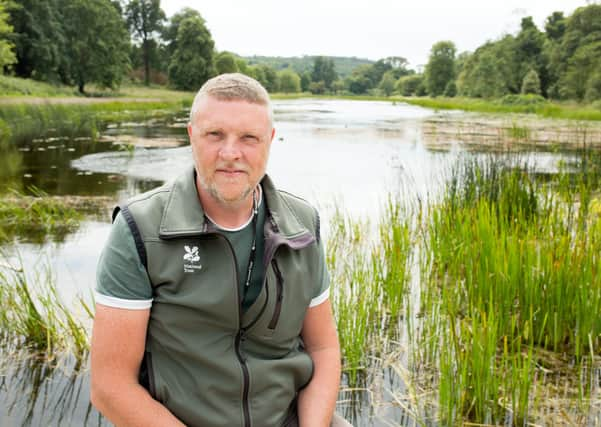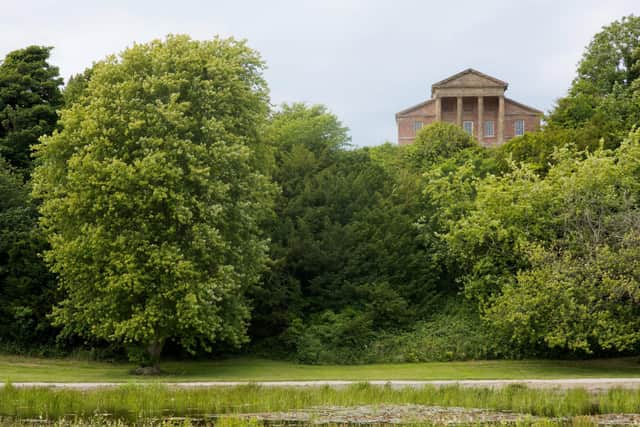Largest remaining ornamental canal is restored at Castle Ward


It’s not just the house that has this dual personality, the estate at Castle Ward contains two very distinctive designed landscapes – one the late 17th to mid-18th century formal Temple Water area and the other, the late eighteenth century naturalistic parkland, laid out around the present mansion house.
In the early eighteenth-century Temple Water canal was built with the dual purpose of being both aesthetic and practical: it provided a body of water to drive the corn mill as well as holding breeding fish and attracting waterfowl. Covering two hectares, it was built on a heroic scale, and is believed to be the largest remaining ornamental canal in Ireland.
Advertisement
Hide AdAdvertisement
Hide AdToday Castle Ward and Temple Water, a scheduled monument, are in the care of conservation charity National Trust which has recently completed a £210,000 project to retore the historic canal and surrounding landscape.


Malachy Conway, archaeologist for the Trust in Northern Ireland explains: “Over recent years, the Temple Water area has been physically deteriorating, due primarily to compromised drainage, inappropriate plant and tree growth and erosion of key sections of the Temple Water canal edge.
“Our ambition was to conserve and repair this historic area in a way that would maintain the formality of the design, while also complementing the softer, naturalised Victorian style. “We also wanted to open up the original pathways and viewpoints so visitors could enjoy the landscape as it was originally intended.”
Using historic documents, paintings and maps to inform decisions, the project focused on the restoration of some of the key surviving formal elements including the Yew Tree Terraces, Lime Tree Avenue, lost historic paths and the Temple Water canal itself.
Advertisement
Hide AdAdvertisement
Hide Ad“The vision was for the canal to once again have a strong, clear edge, so that its scale and size could be fully appreciated, and to put measures in place to stop future erosion,” adds Malachy.


In 2017 the trust began an 18-month programme of investigative work which included aerial and geophysical surveys, archaeological investigations, selective tree removals and drain repairs.
Fish stocks were also reduced in the canal so water levels could be dropped, allowing a detailed assessment of the canal revetement (supporting walls) to be carried out.
The structural work to the canal edge was the priority. In total, the full 616 metres of the canal edge needed repair, with 473 metres of bank requiring a vertical timber revetment to stabilize and protect it.
Advertisement
Hide AdAdvertisement
Hide AdFunding for the project came from the National Trust along with a significant contribution from gifts and legacies totalling over £125,000 including a single donation of £100,000 from the Wolfson Foundation.


Work began in early March 2020 and the project was due to be completed by June 2020, but as with so many projects, the Covid-19 pandemic forced all works to be suspended in line with Government instruction.
Work restarted in late September 2020 with the revetment installation planned for winter 2021, but nature had other ideas.
“The winter of 2021 posed further challenges to the project”, explains Malachy.
Advertisement
Hide AdAdvertisement
Hide Ad“Unseasonably heavy rainfall resulted in several flooding events, one of which led to part of the installed revetment literally popping out of the ground from its position.


“More fixing and resetting was needed before the works could continue and these delays meant that the revetment was only finally fully installed as we entered May 2021.”
With the revetment in place, work began repairing and resurfacing many of the paths within this landscaped area and by the end of June 2021, Temple Water was reopened to the public.
“Now all that the remains is for this historic landscape to settle and recover,” continues Malachy.
Advertisement
Hide AdAdvertisement
Hide Ad“The grass needs to re-grow and the landscape needs to soften and naturalise.
“Temple Water formed part of the original pleasure ground of the estate and this project has ensured that the landscape can continued be enjoyed by visitors long in the future.”
For more information on this and other historic conversation projects being carried out by the National Trust visit www.nationaltrust.org.uk/ni.
Comment Guidelines
National World encourages reader discussion on our stories. User feedback, insights and back-and-forth exchanges add a rich layer of context to reporting. Please review our Community Guidelines before commenting.